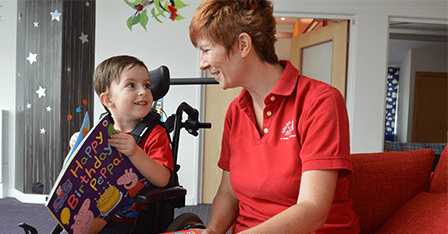
Living and Dying in Pain: Why a Person’s Death Should Not Be Painful
On the 8th October it was World Hospice and Palliative Care Day, another national awareness day, this time one introduced by the World Hospice and Palliative Care Alliance, consisting of hospices around the country and world. This year the theme is ‘living and dying in pain: it doesn’t have to happen’ – an important message on an even more important day, especially given the recent evidence that statistically proves that some people who receive palliative care can live for longer.
Having access to palliative care, when it is needed, is something that I think every person deserves. Advances in technology and medication have enabled drugs to be much subtler now, and in addition to this, there is a bigger tool-box for prescribers to use, making pain relief, at least from a medicinal perspective, much more effective. This progression is invaluable in the sector, and particularly helpful in caring for children and young adults, as we do at Helen & Douglas House. Their pain, which often spans a much shorter life, can therefore be treated in a more nuanced and appropriate manner.
Our ability to care for children with serious and life-shortening conditions has improved, and thirty years on from the opening of Helen & Douglas House, there are now a substantial number of children’s hospice services providing excellent palliative care across the UK. They offer world-class medical care to children and their families, enabling respite, empowered choice, and comfort in decisions including how and where to spend final days and weeks together.
In my experience, pain can be made worse by a person’s psychological state, so I believe that holistic approaches are essential. Providing the opportunity for people to live life to the fullest is a lot of what we do, and a life to the fullest is a life with as little pain as possible, regardless of how long that life will be. For those that we care for, every day presents a different challenge.
There is no typical working day for our nurses and carers, who may be presented with extreme ends of the spectrum in the short space of twenty-four hours. They may start the day working a shift in which they carefully plan the logistics of taking a young person with high dependency needs and life limiting conditions to the cinema, with all the dilemmas this poses. By the end of the day, they may finish their shift working with a colleague who is supporting a family as their loved one dies. These opposing sides of patient support make the roles of those at the charity both challenging and rewarding, and emphasises the deferment approaches involved in removing pain from everyday life.
For our patients, the experiences of palliative care can be that that mark out their life quality. These are activities that are memorable not for their pain or suffering, but rather for the successful quality of life experienced by the patients involved. Where we cannot promise painless days, we can work hard to make symptoms more bearable. Practical support, ranging from the cinema trips described, to help with organising a disabled badge or someone coming to mow the lawn, is also vital. This is the type of support that can significantly help reduce stress and therefore pain, returning patients to a more comfortable psychological state, which, can be just as important as relieving pain pharmacologically.
In my experience, wider society, and those outside of the sector assume that pain is the most frightening thing in the process of palliative care, but it could be a number of things. Often we find breathlessness and disorientation considerably more challenging and less fixable than something for which many people take daily medication. Being alert to these harder and less predictable challenges is just one of the many associated challenges of working in palliative care, and achieving the goal of removing pain from the living process too. Living and dying well is therefore not only limited to pain-management, but an issue which requires much more to effectively tackle.
As we passed this year’s World Hospice and Palliative Care Day by reconsidering the implications and indeed the complications of pain, it is vital to remember that a person’s experience of living and dying should not be painful if at all possible, and it is up to those of us who work in end of life care to ensure that this is the case.
Company: Helen & Douglas House
Name: Clare Periton, CEO
Email: [email protected]
Web Address: www.helenanddouglas.org.uk
Address: Helen & Douglas House, 14A Magdalen Road, Oxford, Oxfordshire OX4 1RW
Telephone: 44 (0) 1865 794749



















